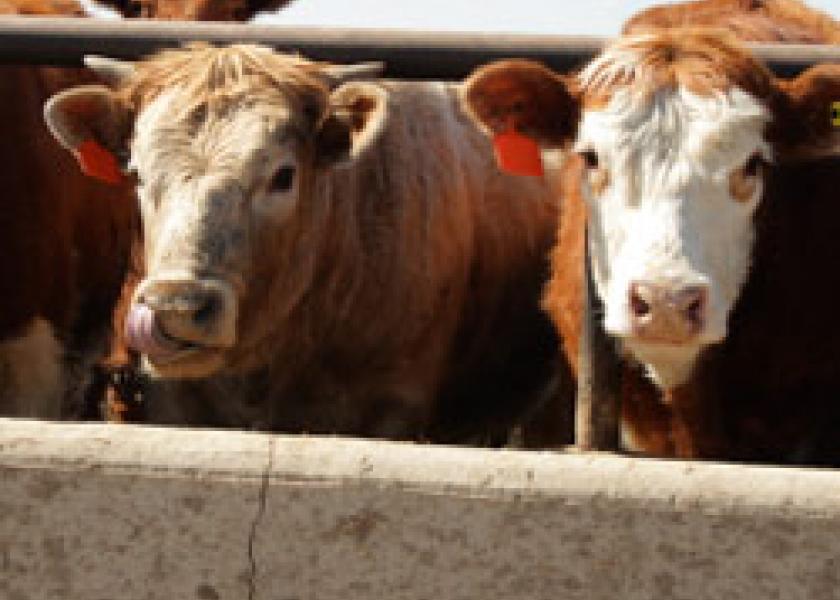Receiving Cattle This Fall? Consider These Six Factors.

As I write this in mid-August, I still get excited by fall being right around the corner. Ranchers see the benefits of their labors as they prepare to sell spring calves, fall calves, and/or yearlings. Farmers harvest their crops. Both of the parties evaluate how well their labors worked and if not written make mental notes of changes and improvements for next year. The feeder, on the other hand, gears up for new commodities and new cattle. Hopefully they have notes or recollections from last year. On the chance that they don’t here are some thoughts.
When receiving calves, here are some things to consider:
1) Clean pens or good traps
2) Clean waters
3) Vaccine protocol updated and supplies on hand
4) 2’ of bunk space per head in receiving pens
5) Good, clean grass hay to start cattle
6) Receiving diet low in ensiled feedstuffs (< 12% as fed)
We need to evaluate the calves purchased. A ranking system works well for this and dictates how we manage them. Make sure the order buyer understands what you and your client want:
• Low Risk – Known source, preconditioned, weaned, vac 45 or better, health history, > 650 lb.
• Moderate Risk – Preconditioned, weaned, > 650 lb.
• High Risk – Unweaned, < 650 lb.
• Ultra-High Risk – Put together, unweaned, <650 lb.
• Oh Crap – Put together, unweaned, mixed sex, stale, ugly, sick off truck
Nobody wants them, but we all have had some of last two categories. More frequent small feedings offer opportunities to detect issues sooner.
We get a fair number of cattle lighter than 650 lb., but we manage them the same – just adding a few more days between steps.
We like to rest calves in a clean pen with plenty of water and space for 12 hours for each 300 miles of transit. Allow additional time if you know the cattle stood overnight at a sale barn or corral site. We prefer to pen them close to the processing center with 2 lbs. to 3 lbs. of good grass or oat hay waiting in the bunk (a good potassium source). Observe the cattle often and refeed to appetite. After 24 hours, offer 1 lb. of your starter/receiving ration per 100 lbs. of body weight and covered with 1 lb. to 2 lbs. of hay. After two feedings, put the hay under the ration and decrease the amount. After two days, stop the supplemental hay.
We do not implant at initial processing, instead we do it when we booster. Much of calf death loss occurs in the first 28 days, so we save the cost of an implant plus we reduce the stress associated with processing.
We also have largely moved away from metaphylactic products, preferring to use direct fed microbials, yeasts, etc. to booster the immune system and improve gut health.
Things to consider include brown sugar which is an effective attractant when sprinkled over the top of the ration or hay when cattle aren’t eating enough. Controlled intake molasses lick tubs will also work and can provide additional nutrient fortification.
Our yearling program is much the same, save moving along a bit quicker on intake and ration moves. We see two problems in yearlings that we don’t see as often in calves. These would be bullers and foot rot. Keep in mind that there are passive (ridees) and active (riders) bullers. Remove the passives to avoid death and/or injury, but identify the actives, as they may need to be removed from the pen to avoid additional problems.
Check the actives for testicles, as they often have one that had not descended before they were castrated or missed, or perhaps the band broke. If this is the case, fix the issue. If cattle are reimplanted at a later date, you can often successfully put passives back with the group without further issue.
Foot rot is an issue north of Interstate 70 all year but particularly in the spring and fall. Keep trace mineral supplementation at or above NRC recommendations and avoid relying solely on oxide and sulfate forms. Instead, opt for some chelates or other trace mineral sources. Zinc and copper are particularly important along with Vitamins A, D and E.
Have a great fall, and hopefully we will be profitable.







